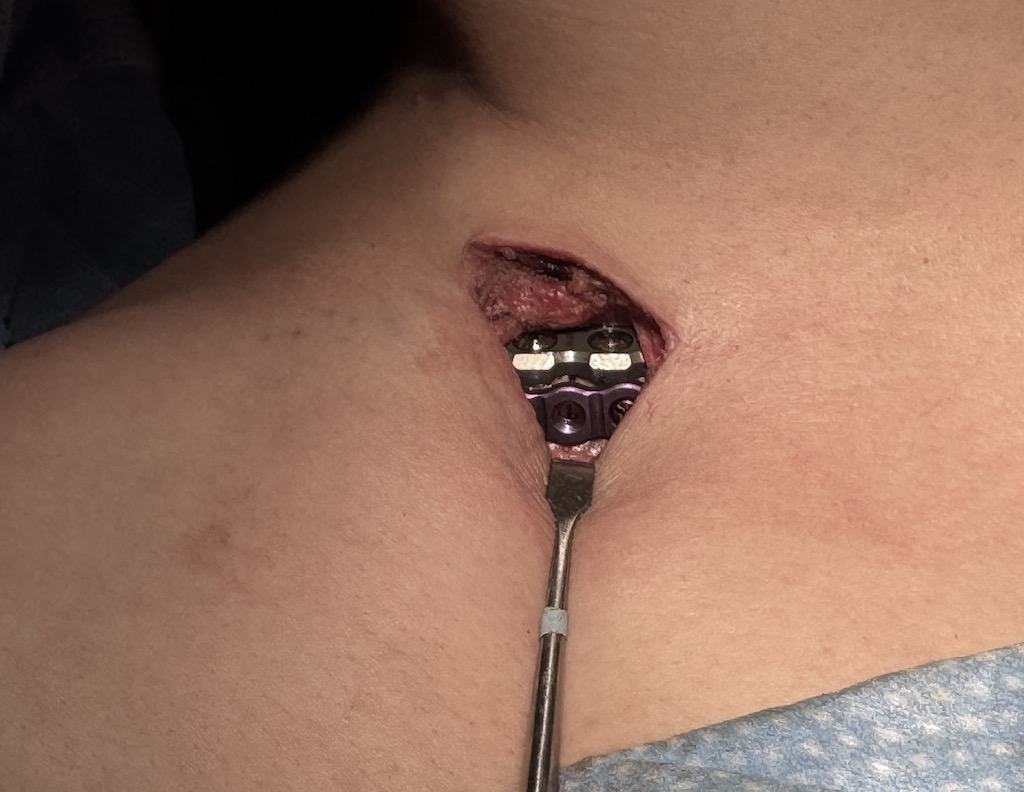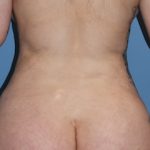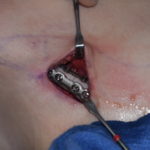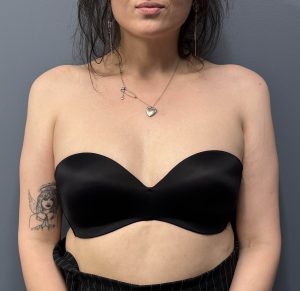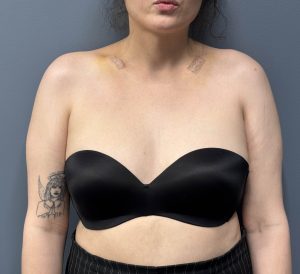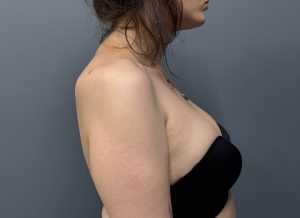Background: Shoulder reduction surgery is both a visual and measured type of change. What ultimately counts is how the appearance of the shoulder changes (looks less wide or square) as well as how it improve clothing options. But because a certain amount of bone is removed the changes came also be quantified by external measurements such as the bideltoid distance. These are all front and back assessments which is at least tis two-thirds of how one sees their upper torso.
The side view of the shoulders is not one of a width assessment but more of a shape one. The shape of the shoulders from the side is due to the deltoid muscles. But the other side view shape component is the angulation of the shoulder joint to the neck line which is typically in a more vertical alignment. If the AC joint or side shoulder is in front of the vertical neckline it may be perceived as hunched forward. The most common reason for hunched shoulders is either over development of the front muscle group of the upper body with lack of development of the upper back muscles or a congenitally poor posture. This postural abnormality is often seen in the elderly and as a result is associated with aging. In the younger patient it may be seen as a sign of weakness or even submission. It is often not viewed as a favorable shoulder shape.
Because the clavicle bone is angulated, higher laterally than medially, its shortening should geometrically pull the shoulders in and downward. (aka rolled inO) But how significant is it and does it always happen?
Case Study: This female presented for shoulder narrowing surgery. She was 5’ 9” tall. Her anterior bideltoid distance was 51cms with a clavicle length of 16.5cms. Her posterior bideltoind width was 54cms.
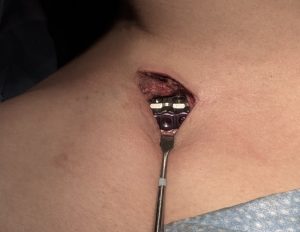
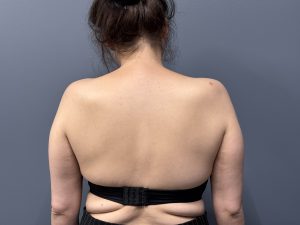
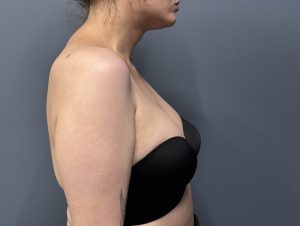
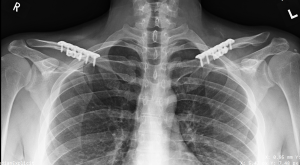
One of the most common questions/concerns about shoulder narrowing surgery is whether it will cause a rolling in effect of the shoulders. For some patients it is an issue they want to avoid while for others it is an effect they would like to see. Certainly everyone will have some immediate and early roll in effect as seen in this patient due the splinting effect of keeping their elbows close to their side after surgery to limit their arm movements. But in the vast majority of patients this is not a sustained shoulder appearance… much to the chagrin of those patients who want it to be a permanent effect. The reason is that not enough bone can really be taken in a single surgery to make that effect occur long term in most patients.
Key Points
1) Broad shoulders can be successfully reduced by clavicle bone removal which improves in both the front and back view.
2) Early after surgery there is a slight roll in of the shoulders seen in the side view. But whether that is sustained long term varies.
3) In the back view the width of the outer shoulders is reduced but the scapular size remains the same.
Dr. Barry Eppley
World-Renowned Plastic Surgeon

